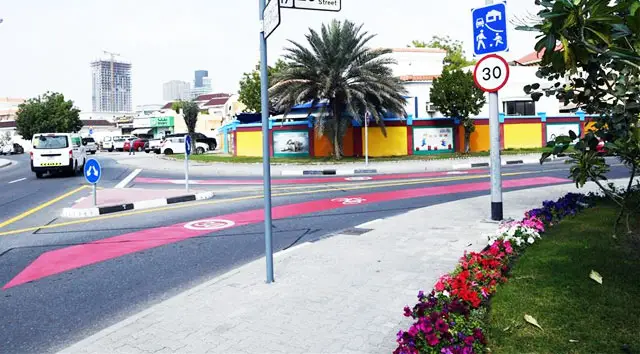Dubai RTA's director-general and chairman of the board of executive directors, Mattar Al Tayer, made a historic announcement last Saturday. It’s about the progress of their Soft Mobility project in the city's residential areas. Residential areas like Karama, Mankhool, and Al Qusais 1 are coming under the masterplan of this new project. The target is to construct adjusted pavements for facilitating better roads for walking, cycling, or running e-scooters.
Al Tayer further said that the project’s initial phase would be completed by March. He mentioned, “addresses first and last-mile challenges by providing an infrastructure that supports the integration of mobility such as the construction of cycling tracks, pedestrian crossings, and rest areas, shaded paths, landscaped areas, parking for rented cars and bike racks.”

By next year, this RTA project will cover other residential areas like Al Barsha 1 and 2, Bateen, and Baraha. It'll also include residential areas like Al Ras, Al Qusais 2, and Al Qusais Industrial areas. Also, by 2024, the number of regions will increase to 27.
Non-motorized modes of transport
Another report started about RTA's vision to promote the Non-motorized modes of mobility between places. RTA Dubai's car-free mobility study aims to develop roads and underways for walking and biking. These new road infrastructures focus on providing a smooth and safe transport experience for everyone, which should be good enough for all medium and long journeys in the city by connecting various city components.
Provide integrated transportation
This RTA's Soft Mobility Project also aims to build separate transportation infrastructure to facilitate the mobility of people using Non-motorized transportation modes. It includes the building of elevated pedestrian crossings, construction of shared biking lanes. The projects also aim to install signage boards for caution and direction. Furthermore, the plan also includes constructing pavements so that the routes can be shared between vehicles and non-motorized means.
Selection Criteria
RTA's area selection for implementing this project was based on certain specific parameters.
Areas, where the population density is high with a large number of users, were chosen first. Other selection criteria include choosing between residential and commercial type land, facilities to keep bikes, availability of pedestrian walkways, and others. The RTA already had a 5-Year Plan to build cycling tracks across the city. It is also taken into consideration in this Soft Mobility project.
Mobility
The report says, in this initial phase, around 314 elevated pedestrian crossings and RTA constructed 66 speed-calming devices in the city's three major residential areas. Until now, RTA built around 33km of hared pedestrian and biking lanes. They also made around 52km of shared paths and installed over 2,000 directional signs. Also, in areas of Karama, Mankhool, and Al Qusais 1, the RTA already build several resting areas and shaded routes.
RTA Dubai's Soft Mobility project is inspired by the unique concept which is spreading all over Europe. It is about the Friendly Safe Streets, where people can travel conveniently using walkways. The project emphasized pedestrians crossing, pavements, and installing speed-calming devices. It will eventually help the people to move around smoothly in Dubai.